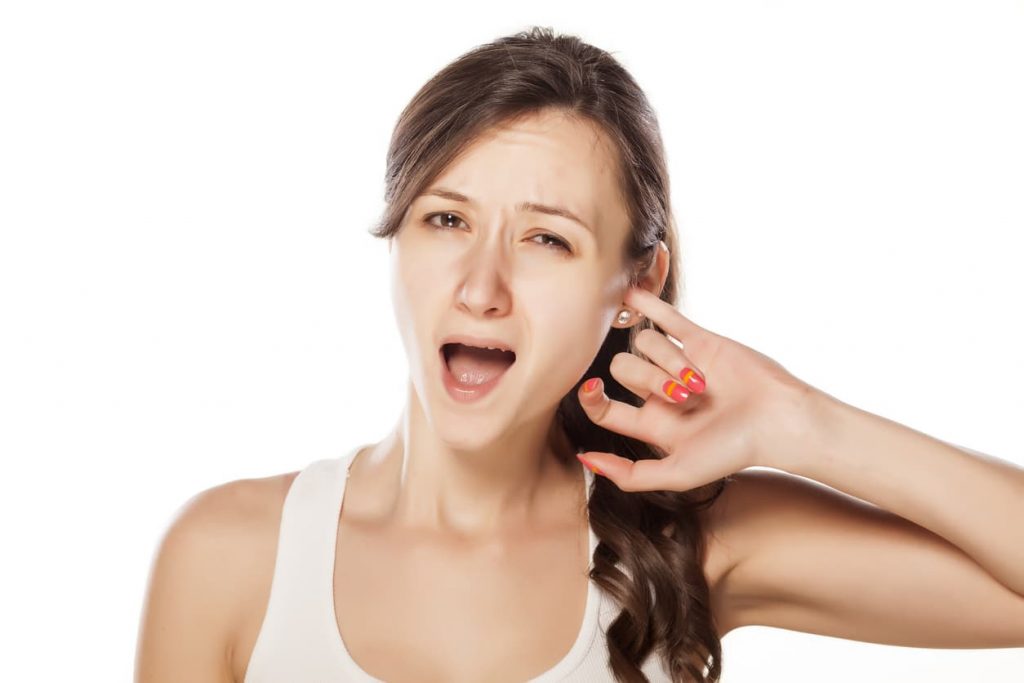What Causes Blocked Ears?
Ear wax plays an important role in trapping dirt, dust, and other unwanted debris from making its way further into the ear canal. The production of earwax is a natural occurrence and is beneficial for lubrication of the ear canal.
Ears are cleaned via their own ‘self-cleaning’ mechanism. The earwax which is formed in the outer third of the ear canal is made up of secretions from oil and sweat glands, mixed with dead skin cells, dust, dirt and hair. Movement from the jaw assists a ‘conveyor belt’ motion on the superficial skin layer, allowing the earwax to migrate out of your ear where it loosens and can be wiped away.
However, sometimes people may produce excessive earwax which can become impacted. Impacted ear wax may be unable to migrate out of the ear and can become stuck in the ear canal which continues to produce wax, causing an earwax blockage.
Blocked ears may occur because you:
- Use cotton buds or other foreign objects which have resulted in the wax impacting
- Wear hearing aids
- Work in a dusty or dirty environment
- Wear ear plugs or earphones regularly
- Have a genetic predisposition to excessive wax production
- Suffer from stress
Swimming and showering can also cause blocked ears if the ear is already partially blocked with wax. The wax absorbs the water that is blocked and expands, causing a blocked ear.
What Are the Symptoms of Blocked Ears?
If you have a blocked ear you may experience:
- A feeling of fullness in the ear
- Itchiness
- Pain
- Discharge
- Odour
- Hearing loss
- Tinnitus
- Feeling off balance
People may also experience a common phenomenon of blocked ears whereby they can wake up with a blocked ear which over the course of the day can unblock. The next day they again awake with a blocked ear and the cycle repeats. This happens because the outer part of the ear moves when you talk and chew, loosening up the wax and creating temporary gaps through which sound is able to travel. To break the cycle, it is necessary to have the wax removed.
At-Home Remedies
Some at home remedies can be ineffective and may be unsafe. Cotton buds, ear candles, ‘twisty topped’ wax removal implements and other items that can be inserted into the ear canal can push wax further down, worsening symptoms and impacting the blockage.
A home remedy that can relieve pain and discomfort for a blocked ear is using earwax softening drops. These can be bought at a chemist. Ear wax softening drops can help to soften and disintegrate the wax, allowing the normal conveyor belt motion to push the wax out. However, earwax softening drops should not be used if you have a current ear infection, a perforated eardrum or have ever had ear surgery.
Earwax softening drops can often be a temporary fix, allowing the wax to soften enough to create gaps through which you can continue to hear. It is recommended that you see a health care professional to examine your ears following use to ensure that you have no remaining impacted wax. Earwax softening drops are often used in conjunction with micro-suction or curettage procedures as it can make the manual removal a lot quicker. Earworx provides a microsuction service that is safe and effective which can treat and relieve the symptoms of a blocked ear.
Micro-Suction
Microsuction is a delicate procedure that requires practical training. All Earworx nurses have completed a nationally accredited Earworx Course in Aural Care and an extensive practical placement in order to learn how to safely perform the microsuction and curettage procedure. So where adequate training has been conducted, microsuction is a safe, painless and effective method to cure a blocked ear. This procedure involves the use of a micro-suction catheter to gently suck out the impacted wax from the ear canal – much like a tiny vacuum sucking up dirt. Throughout the procedure the nurse uses special converged binocular lenses called ‘O-Scopes’ which enable them to view the ear canal and drum throughout the procedure, enhancing safety.
Micro-suction is the preferred method for earwax removal by Ear Nose and Throat surgeons. It differs from ear syringing in that it doesn’t require water and is a dry technique. Being a dry technique, micro-suction can also be used on people who have perforated eardrums, diabetics, and people with depressed immune systems.
If you have a blocked ear, you’re in safe hands when booking an appointment with Earworx.
1) Schwartz et al 2017, Clinical Practice Guideline (Update): Earwax (Cerumen Impaction), Otolaryngology-Head and Neck Surgery Vol 156 (IS) SI-S29





